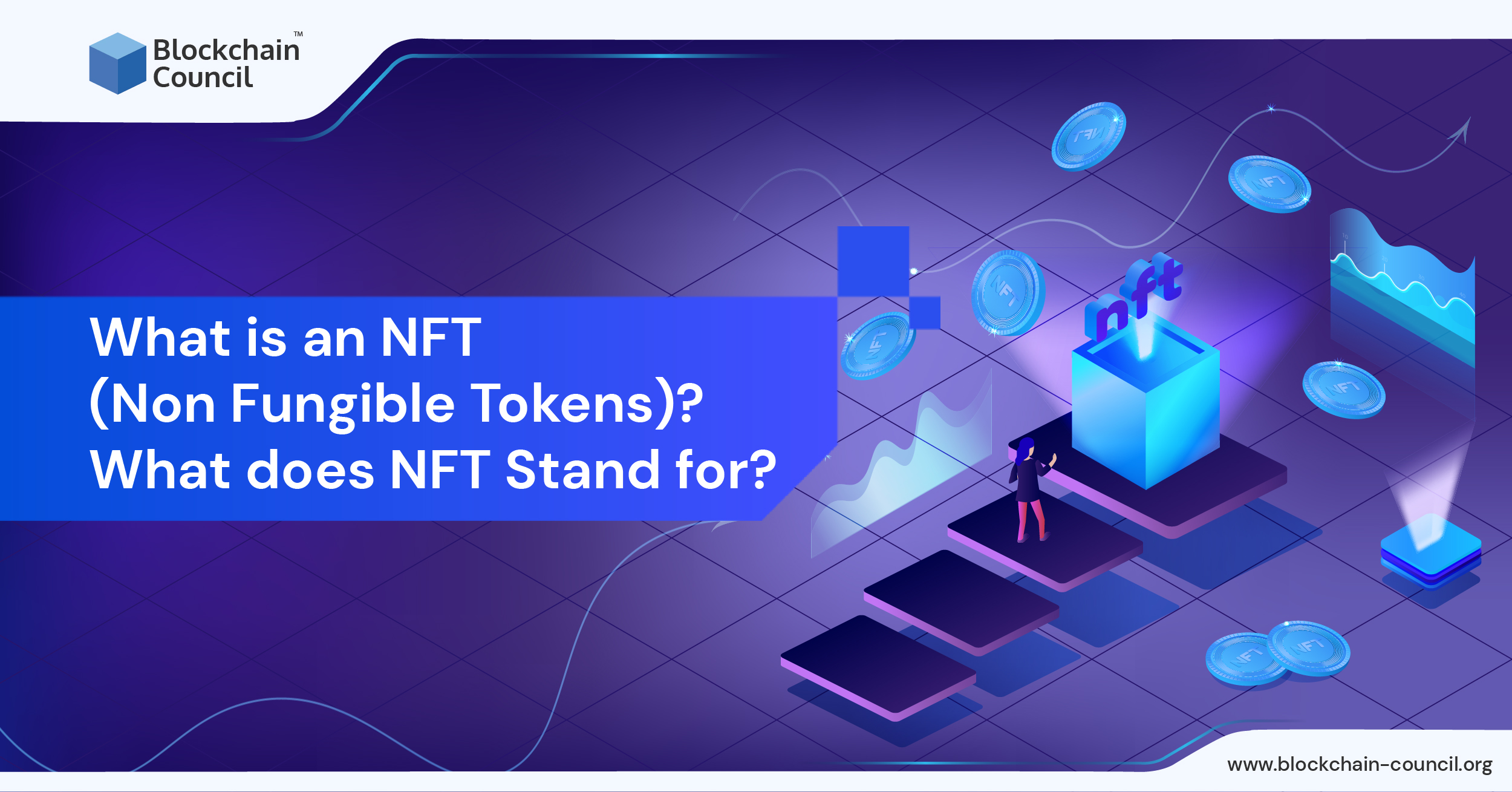
- Anshika Bhalla
- September 15, 2024
What is NFT?
NFTs have been in the market for quite some time now. But what is NFT? How do NFTs work? NFTs are a type of digital asset that represents ownership or proof of authenticity of a unique item or piece of content. Unlike cryptocurrencies such as Bitcoin, which are fungible (meaning that each unit is interchangeable with another), NFTs are non-fungible tokens, meaning that each token is unique and cannot be replicated.
The concept of NFTs can be traced back to the creation of the first Blockchain-based game, CryptoKitties, in 2017. The game allowed players to collect, breed, and trade virtual cats, each of which was a unique NFT.
Since then, NFTs have expanded beyond the world of gaming and into the realms of digital art, music, and even sports memorabilia. In this article, we will dive deeper into the world of NFTs. So, let’s get started!
What does NFT stand for?
Now, again the question comes, “What is NFT? What does NFT stand for?” As stated earlier, NFT stands for non-fungible token. A digital artifact that reflects real-world assets such as art, music, in-game goods, and videos is known as an NFT. They’re purchased and sold digitally, sometimes with cryptocurrency, and they’re mostly encoded with the same program as many other cryptos.
Let’s take an example to understand it better:
Suppose you have a $10 note. Can you exchange it for another $10 note? Yes, you can. Because all $10 notes are essentially the same. Similarly, if you own one Bitcoin, then you can exchange it for another Bitcoin. They have equal value. And you don’t have to care which specific $10 note or Bitcoin you have. These assets are fungible. It means that they are interchangeable.
Now let’s come to NFTs. They are non-fungible. An NFT is like a digital certificate of ownership. Suppose you own a rare playing card. An NFT is a certificate to give you the sole ownership of the card. NFTs represent your ownership for something unique, like digital art, music, videos, or even virtual real estate.
Now you might think, what is the guarantee that it will not be copied and sold to other people? The answer is, Blockchain. You might already know that Blockchain is a secure public ledger to store records. The NFTs are recorded on a Blockchain. The records stored on a Blockchain are transparent and secure.
So, when you own an NFT, you have proof on the Blockchain that you own that one-of-a-kind digital thing. Even though anyone can still see or share the actual content online, the only owner of the thing will always be you. But what if you want to transfer the ownership? In that case, you can sell the NFT and transfer the ownership to the person who buys it.
People buy and sell NFTs quite often. The value can vary a lot depending on how much someone is willing to pay for that unique digital item. It is a bit like collecting rare trading cards or owning a piece of exclusive art.
Why are NFTs So Popular?
Now that you know the answer to, “What is NFT? What does NFT stand for?” The next question is: Why are NFTs so popular? What is driving the popularity of NFTs? The crypto market was heavily affected by the crypto winter of 2022. The NFT market could not resist the downgrade either. However, from the beginning of 2023, the market has shown signs of slow recovery. The NFT sales volume reached $24.9 billion in just the first quarter of 2023. So, what is the driving force behind this popularity? Let’s have a look at some factors that are driving NFT’s growth.
One factor is the rise of Blockchain technology, which provides a secure and transparent way to verify ownership and transfer of digital assets. This makes NFTs an attractive option for artists, musicians, and creators who want to sell their work directly to their fans without relying on traditional intermediaries like galleries or record labels.
Another factor is the sense of exclusivity and community that NFTs create. Collectors and investors are willing to pay a premium for NFTs because they represent a unique and rare piece of content that only they can own. This creates a sense of belonging to an elite group of owners who share a passion for the same digital asset.
NFTs also allow the creators to earn rewards. You can sell an NFT or even mint to earn money. It is a buyer-to-customer industry. It means that you don’t need a middleman to sell or buy NFTs.
But the potential uses of NFTs extend far beyond art and music. NFTs can be used to represent a wide range of digital assets, including virtual real estate, gaming items, and even tweets. NFTs also have the potential to revolutionize the way we think about ownership and value in the digital age, enabling creators to monetize their work and build communities around their content.
However, like any emerging technology, NFTs are not without their challenges. There is still some confusion about what exactly NFTs are and how they work. So, read ahead to find the answers.
NFT’s VS Cryptocurrencies
Value Proposition
Cryptocurrencies are fungible, meaning that each unit of currency is interchangeable with another, making them a reliable and efficient means of exchange, as well as a potentially lucrative investment opportunity. In contrast, NFTs are non-fungible, which means that each token is unique and cannot be exchanged for another token of the same value. NFTs are designed to represent ownership or proof of authenticity of a specific digital asset, such as a piece of art, music, or even a tweet.
Creation and Storage
Another key difference between cryptocurrencies and NFTs is the way they are created and stored. Cryptocurrencies are created through a process known as mining, in which powerful computers solve complex mathematical problems to verify transactions and add new blocks to the Blockchain. These blocks contain records of all past transactions and are stored on a decentralized network of computers, making them difficult to hack or manipulate.
NFTs, on the other hand, are created through a process known as minting, in which a unique digital asset is linked to a specific token on the Blockchain. This token acts as proof of ownership and authenticity, and can be bought, sold, or traded like any other digital asset.
Use Case
Cryptocurrencies can be used to purchase goods and services or traded on exchanges. In contrast, NFTs are typically used for collectibles, gaming assets, or unique digital creations. The value of an NFT is determined by its uniqueness and perceived value, which can fluctuate based on demand. Let’s have a look at some particular use cases of NFTs in the real world:
Music: NFTs are being used to generate new revenue streams for musicians while also giving fans greater control over their favorite songs. Spotify, for example, is exploring a service that would allow users to listen to exclusive music. They can do so by purchasing NFTs of that song.
Event ticketing: Many event companies are using NFTs to develop more secure and efficient event ticketing systems. Ticketmaster, for example, is currently offering NFT-based tickets for certain events. This helps to prevent fraud and counterfeit tickets.
Virtual real estate: NFTs are being used to produce and sell virtual real estate in metaverses such as The Sandbox and Decentraland. This land can be utilized to create games, enterprises, and social places.
Gaming: Gaming platforms use NFTs to develop new in-game products and experiences. For example, the popular video game Axie Infinity lets users own and trade NFT-based creatures known as Axies.
Fashion: Big whales in the fashion industry are using NFTs to make and sell digital fashion products. You can wear these in metaverses or in the real world via augmented reality. Gucci, for example, has released a line of NFT-based footwear.
Key Benefits of NFTs
Now that you know what does NFT stand for, it is important to know If we have to sum up the key benefits of NFTs, then they would be:
- Ownership
- Uniqueness
- Transferability
- Programmability
- Monetization
Now, let’s discuss each of the key benefits of NFTs:
- Ownership: In today’s world, data ownership holds significant importance. NFTs open new doors to data ownership. You may ask, how?
NFTs are one-of-a-kind digital tokens. Each one is unique and holds a special value. This allows you to demonstrate that you own a certain digital item, such as a work of art or a collectible, in the digital domain. Further, as we discussed earlier, NFTs employ Blockchain technology. It functions as a digital ledger that tracks ownership. Once you own an NFT, it is recorded on the Blockchain. This makes your ownership publicly verifiable.
To strengthen the digital ownership game, NFTs also retain information about the item’s history. This is known as provenance. This means you can track the item’s origins, previous owners, and its full history. It’s like having a digital authenticity certificate.
- Uniqueness: Uniqueness is crucial when it comes to collectibles. The value of a collectible increases when it is unique and one-of-a-kind. When something is one-of-a-kind, it indicates there is only one of its kind in the world. But how do NFTs achieve uniqueness?
NFTs help to achieve uniqueness by assigning a unique code to each digital item on the Blockchain. Consider it similar to a painting’s certificate of authenticity. This code verifies that you are the owner of the original digital object. This means that if you own the NFT of Mona Lisa, then everyone will acknowledge you as the owner by the code assigned to it.
- Transferability: Another key benefit of NFTs is its transferability. If we ask you, “What is an NFT?” you can say by now that NFTs or non-fungible tokens are like digital certificates that prove your ownership of a digital asset. With NFTs, you can even transfer your digital ownership.
With a few clicks, you can transmit NFTs to others. Consider emailing a photo with a verification mark that it is the original. But how? All you need is a NFT wallet. We will discuss in the next section, “How do NFTs work?” in a step-by-step process.
NFTs operate without the use of intermediaries such as banks. As a result, you can immediately sell or trade them with others. Because NFTs are available on the internet, anyone worldwide can buy or sell them.
- Programmability: Now, imagine a scenario where you want your assets to function in a particular way. Can you do that with your physical assets? Can you ask your $20 note to function in a specific way? You can’t. But you can with NFTs. Because NFTs or non-fungible tokens are programmable.
NFTs contain smart contracts. These smart contracts are basically coded sets of rules. They can act automatically when certain circumstances are met. For example, if you own an NFT for digital art, you can set the smart contract to pay you a percentage of revenues each time the art is sold to someone else. This occurs without the intervention of anyone else. It’s like having a self-enforcing digital contract.
- Monetization: Another of the key benefits of NFTs is that they enable creators to monetize their work by selling unique, one-of-a-kind digital assets. This has created new opportunities for artists, musicians, and other content creators who were previously unable to monetize their digital creations. NFTs also provide proof of ownership and authenticity, which can be valuable for collectors and investors.
How Do NFTs Work? A Step-by-Step Process
Create a digital asset: This could range from a work of art to a video game item. You can even turn your selfie on NFT!
Select a Blockchain platform: Although Ethereum is the most prominent Blockchain platform for NFTs, there are others, like Polygon and Solana. You should choose NFTs considering a number of factors like NFT gas fees, scalability of the plattform, etc.
Create a cryptocurrency wallet: You will need a digital wallet to store cryptocurrency and NFT.
Mint NFT: You may wonder, “How to mint an NFT?” This procedure involves creating the NFT on the Blockchain platform of your choice. This will require you to pay a fee known as NFT gas fee.
Put the NFT up for sale: Once you have created the NFT, you can sell it on an NFT marketplace like NFTICALLY.
Explanation of the different types of NFTs
Art NFTs
Art NFTs are digital artworks that are verified on a Blockchain. They allow artists to monetize their digital creations and offer collectors the opportunity to own unique and authenticated pieces of digital art. Art NFTs have gained a lot of popularity in recent times, with several high-profile sales grabbing the headlines.
One of the most famous examples of art NFTs is Beeple’s “Everydays: The First 5000 Days”, which sold for $69 million at a Christie’s auction in March 2021. The artwork is a digital collage of 5000 unique pieces that Beeple created over a 13-year period.
Gaming NFTs
Gaming NFTs are digital assets that are used in video games. These NFTs can represent in-game items such as weapons, skins, and virtual real estate. Gaming NFTs can also represent unique digital characters that can be traded and used across multiple games. These NFTs offer gamers a way to earn real money by trading digital assets, which can have real-world value.
Axie Infinity is a popular Blockchain-based game that uses NFTs. Players can earn Axie tokens by breeding and battling digital creatures called Axies. The tokens can be traded on cryptocurrency exchanges for real money. In 2021, an Axie Land plot sold for a record-breaking $2.48 million.
Collectible NFTs
Collectible NFTs are digital collectibles that are verified on a Blockchain. They can be anything from trading cards to virtual pets. Collectible NFTs are unique and cannot be replicated, which makes them highly sought after by collectors.
CryptoKitties is one of the most famous collectible NFTs. It is a game where players can breed, buy, and sell virtual cats on the Ethereum Blockchain. The cats have unique traits and can be traded on cryptocurrency exchange
Music NFTs
Music NFTs are digital assets that represent ownership of music-related content. These NFTs can represent anything from a single song to an entire album. Music NFTs allow artists to monetize their music in a new way, and they offer fans the opportunity to own a unique and authenticated piece of music.
In March 2021, the DJ 3LAU sold an album of his music as an NFT for $11.6 million. The album is called “Ultraviolet” and consists of 33 unique tracks that are stored on the Ethereum Blockchain.
Sports NFTs
Sports NFTs are digital assets that represent ownership of sports-related content. These NFTs can represent anything from a single highlight clip to an entire game. Sports NFTs offer fans the opportunity to own a unique and authenticated piece of sports history.
In April 2021, a LeBron James highlight sold for $200,000 as an NFT. The highlight was from a game in which James scored his 35,000th career point, making him the third player in NBA history to reach that milestone.
Domain NFTs
Domain NFTs are digital assets that represent ownership of a domain name. These NFTs offer a new way to trade and sell domain names, which can have real-world value. Domain NFTs can also be used to secure domain names, making them more difficult to steal or squabble over.
In March 2021, the domain name “eth.link” sold for 200 ETH, which was worth around $380,000 at the time. The domain was sold as an NFT on the Ethereum Blockchain.
Virtual Real Estate NFTs
Virtual real estate NFTs are digital assets that represent ownership of virtual land. These NFTs can be used in video games, virtual reality platforms, and other digital environments. Virtual real estate NFTs offer a new way to invest in digital real estate, which can have real-world value.
In December 2021, the Sandbox metaverse made headlines with the sale of a virtual land parcel for a staggering $4.3 million, setting a new record for the most expensive virtual real estate purchase to date. Reports indicate that the acquisition was spearheaded by a group of developers called “Republic Realm,” affiliated with the video game company Atari, known for popular titles such as RollerCoaster Tycoon and Zoo Tycoon.
Some More Use cases for NFTs
Sports Memorabilia: One of the most exciting and rapidly growing use cases for NFTs is in the sports memorabilia market. NFTs allow fans to buy and sell unique digital assets, such as virtual trading cards, autographed jerseys, and other collectibles, with provable ownership and authenticity. The NBA’s Top Shot platform, for example, has already generated over $700 million in sales, with many other sports leagues and teams exploring similar opportunities.
Metaverse Real Estate: The metaverse is a virtual world where users can create, own, and trade digital assets and experiences. NFTs are being used to represent virtual real estate in the metaverse, providing users with a way to own and monetize their virtual land. Some companies, such as Decentraland and Somnium Space, are even building entire virtual worlds on top of Blockchain technology, creating new opportunities for gaming, socializing, and commerce.
Music Royalties: NFTs are being used to transform the music industry by providing a new way to buy and sell music royalties. In the past, music royalties were often bundled together and sold as a package, making it difficult for individual investors to participate. With NFTs, however, music royalties can be tokenized and sold in smaller increments, allowing more people to invest in their favorite songs and artists.
Identity Verification: NFTs are being used to verify digital identity in a secure and tamper-proof way. For example, the World Economic Forum has proposed using NFTs as a way to verify COVID-19 vaccination records. NFTs can also be used to verify other types of identity, such as academic degrees or professional certifications, providing a more secure and efficient alternative to traditional paper-based credentials.
Virtual Fashion: NFTs are being used to create and sell virtual fashion items, such as digital clothing and accessories, that can be worn in the metaverse or other virtual environments. Virtual fashion has already become a lucrative market, with some items selling for hundreds of thousands of dollars. NFTs provide a way to verify ownership and authenticity of these digital items, creating new opportunities for designers and collectors alike.
Ticketing: NFTs are being used to revolutionize the ticketing industry, providing a more secure and efficient way to sell and distribute tickets for events. NFTs can be used to verify ownership and authenticity of tickets, prevent fraud and scalping, and enable direct transactions between buyers and sellers. Some companies, such as EventChain and Blockparty, are already using NFTs to sell tickets for concerts, festivals, and other live events.
Digital Art and Collectibles: Digital art and collectibles remain one of the most popular use cases for NFTs, with new platforms and marketplaces emerging every day. NFTs allow artists and collectors to create, buy, and sell unique digital assets, such as artworks, animations, and memes, with provable ownership and authenticity. Some of the most well-known digital art NFTs have sold for millions of dollars, including Beeple’s “The First 5000 Days” and CryptoPunks’ “Alien” NFT.
Charity and Social Impact: NFTs are being used to raise money for charity and social impact causes, providing a new way to engage and incentivize donors. For example, the Carbon Offset Initiative has created an NFT marketplace where users can buy and sell carbon offsets, with proceeds going to support climate change projects. NFTs can also be used to incentivize and reward individuals who contribute to social impact initiatives, such as donating to a non-profit organization or participating in community service projects. NFTs can provide tangible and unique rewards for donors, creating a more engaging and meaningful giving experience.
Gaming and Esports: NFTs are being used to create new opportunities for gamers and esports enthusiasts, providing a way to monetize virtual assets and experiences. For example, Axie Infinity is a Blockchain-based game that allows players to collect, breed, and battle creatures, with some rare creatures selling for thousands of dollars on NFT marketplaces. NFTs can also be used to reward players for achieving in-game milestones, creating a more competitive and rewarding gaming experience.
Virtual Reality and Augmented Reality: NFTs are being used to create new opportunities for immersive experiences in virtual and augmented reality. For example, Sensorium Galaxy is a virtual reality platform that allows users to attend live music concerts, festivals, and other events in a fully immersive environment, with some events featuring exclusive NFTs that can be collected and traded. NFTs can also be used to create unique and interactive experiences in augmented reality, such as scavenger hunts and other location-based games.
Advantages of NFTs
Unique ownership of digital assets: With NFTs, creators and collectors can prove ownership of a particular asset, which can increase the value and authenticity of the asset. This can also help prevent fraud and piracy, as the ownership of the asset is recorded on a Blockchain network.
Monetization of digital assets: NFTs allow creators to monetize their digital assets in new and creative ways. For example, digital artists can sell their artwork as NFTs, with buyers receiving a unique token that proves ownership of the artwork. This can help artists earn more revenue from their creations and provide a new revenue stream for digital content creators.
Fractional ownership: NFTs can also enable fractional ownership of assets, allowing multiple buyers to own a piece of an asset. This can provide more accessibility to high-value assets, such as real estate or collectibles, allowing more people to invest in them.
Enhanced liquidity: NFTs can provide enhanced liquidity for digital assets, allowing buyers and sellers to trade assets more easily and efficiently. With NFT marketplaces, buyers and sellers can quickly and securely exchange NFTs for cryptocurrency or fiat currency.
Traceability and transparency: NFTs provide a transparent and traceable record of ownership and transaction history on a Blockchain network. This can provide greater transparency and accountability for buyers and sellers, as well as increase trust in the digital asset market.
New opportunities for creators and businesses: NFTs are providing new economic opportunities for creators and businesses in various industries, from art and music to sports and gaming. For example, NFTs can provide a new revenue stream for musicians, allowing them to sell music royalties as NFTs. Similarly, sports teams can sell NFTs representing limited-edition merchandise, creating a new revenue stream for the team.
Potential for long-term value: Some NFTs have the potential to hold long-term value, similar to traditional collectibles. For example, some rare NFTs have sold for millions of dollars, creating a new market for high-value digital assets.
Potential for NFTs to Disrupt Traditional Industries
Art Market
The art market is one of the traditional industries that NFTs are disrupting. NFTs provide artists with a new way to monetize their work, and it eliminates the need for intermediaries like auction houses and galleries. NFTs also provide a more transparent and secure way to verify the authenticity of art, which is a significant concern in the art world.
Gaming
NFTs are also disrupting the gaming industry. Players can now buy and sell in-game items as NFTs, providing them with actual ownership of the items. This new development has the potential to change the way the gaming industry operates, providing players with more control over their virtual assets.
Real Estate
NFTs are also disrupting the real estate industry. They provide a new way to represent property ownership, and the use of NFTs can streamline the real estate buying and selling process. NFTs can also be used to represent fractional ownership, making it possible for people to own a small part of a property.
Fashion
The fashion industry is another traditional industry that NFTs are disrupting. NFTs can be used to represent digital fashion items, such as virtual clothing, which can be sold and traded as digital assets. This provides a new way for designers to monetize their work and for consumers to express themselves digitally.
Other Industries
NFTs are disrupting other industries as well. For example, the music industry is experimenting with NFTs as a new way for artists to monetize their work and for fans to own a piece of music history. NFTs are also being used in the sports industry to represent ownership of memorabilia and even as a way to buy and sell tickets.
Challenges and Limitations of NFTs
Environmental Concerns
One of the most significant challenges facing NFTs is the environmental impact of their creation and exchange. NFTs are typically built on the Ethereum Blockchain, which relies on energy-intensive proof-of-work (PoW) mining algorithms. This process consumes vast amounts of energy and generates significant greenhouse gas emissions, leading to concerns about the carbon footprint of NFTs.
While some projects are exploring alternative Blockchains that use less energy, the majority of NFTs are still created using Ethereum, which remains one of the most energy-intensive Blockchains.
Scalability
Another significant challenge facing NFTs is scalability. As more and more people adopt NFTs, the Ethereum Blockchain has struggled to keep up with the demand, resulting in high transaction fees and slow processing times. This can make it challenging for artists and creators to sell their NFTs, particularly if they are not well-known or have a smaller audience.
To address this challenge, developers are exploring various solutions, including layer 2 solutions like Polygon and side chains like Optimism. These solutions aim to reduce the strain on the Ethereum network and make it easier and cheaper to buy and sell NFTs.
Lack of Standardization
Another challenge facing NFTs is the lack of standardization. Unlike traditional assets like stocks or bonds, there are no standard rules or regulations governing the creation and exchange of NFTs. This can make it difficult for buyers and sellers to navigate the market, leading to confusion and potential fraud.
To address this challenge, various industry groups and organizations are working to establish common standards for NFTs, including metadata standards and licensing frameworks. However, this process is still in its early stages, and it may take some time before these standards are widely adopted.
Security Risks
NFTs are also susceptible to various security risks, including hacking, fraud, and theft. As the value of NFTs continues to rise, they are becoming an increasingly attractive target for cybercriminals, who can exploit vulnerabilities in the underlying Blockchain technology to steal or manipulate NFTs.
To address this challenge, developers are exploring various security measures, including encryption and multi-factor authentication. However, as with any emerging technology, there is a risk that new vulnerabilities will be discovered over time.
Market Saturation
Finally, one of the most significant challenges facing NFTs is market saturation. As more and more artists and creators enter the market, the supply of NFTs is rapidly increasing, potentially leading to oversaturation and a decline in value. Additionally, there is a risk that NFTs could become a bubble, similar to the dot-com bubble of the early 2000s.
While there is no way to predict the future of the NFT market, it is clear that the challenges and limitations facing NFTs must be addressed if they are to fulfill their potential as a new asset class.
How to Create Your Own NFT?
There are few steps that you can take for creating an NFT. You can create any type of digital file like GIF, Image, Music file, any social link, etc. In this digitally transforming world, anything and everything can be transformed digitally. Here, NFT is a creation of a unique token that can be reproduced again and again, but the original version will be securely stored because of Blockchain technology.
To begin with, pick your item
Design your art and create your NFT. Also, it is important to create something unique. For that, you can digitally draw and add the file to an NFT exchange platform. There anyone can buy or sell their NFTs online. You can make a set of NTFs, and that can be added as collectible cards.
In addition, keep some Ether
Having some Ether or other exchangeable cryptocurrency for buying and creating the non-fungible token. You mainly required Ether (ETH) token as the Ethereum Blockchain platform is considered the most prominent marketplace for NFT.
After that, Choose a marketplace
As soon as you design your NFT and have Ether handy, you can move forward to the NFT Marketplace and mint your art. There are several platforms where you can easily list your NFT.
Some of the Common and most used NFT marketplaces are:
- NFTICALLY
- MetaMask
- OpenSea
- Rarible
- Mintable
Note: Before investing your time and money into NFT, it is important to consider all the possibilities and proper knowledge about the NFT in the Ethereum Blockchain ecosystem.
Why Should You be a Certified NFT Expert™ and a Certified NFT Developer™?
Learning is a continuous process, and every time any new technology comes, it is interesting to understand and implement it in real work. So if you are a tech geek or have a keen entrance in technology, then doing specific NFT certification or online training will benefit your career and personal development.
But which NFT certification is the best? You can go for the Certified NFT Expert™ and the Certified NFT Developer™ certifications by the Blockchain council.
Being a NFT Expert validates the individual for having clear concepts of NFT Blockchain technology. Also, you will have skills by understanding the course material, and your knowledge will be tested with the exam-based test. If you pass the test, then you are a Certified NFT Expert™.
On the other hand, the NFT Developer certification demonstrates your knowledge and skills in NFT development. It can make you more competitive in the job market. You will also learn how to build NFT-based platforms for various businesses. This will increase your chances to earn a higher salary.
These NFT certifications will not only answer the burning questions, “What is NFT? How do NFTs work?” But also provide you with the necessary skills and knowledge to crack the deal and earn big.
No matter if you have zero knowledge about the Blockchain concepts, You will be learning about the basics of Blockchain technology, ethereum, and all the necessary basic concepts will be covered. Knowing about NFT will provide you a kick start for implementing your art skills as well as technical skills in the Blockchain domain. And for further knowledge, you can choose the Blockchain certifications by the Blockchain Council.
Wrapping up
NFTs have the potential to alter digital exclusivity and redefine digital property rights. Celebrities have started to partner with NFT ventures, and others have broken records in terms of sales. Now that we know, “What is NFT and how do NFTs work?” We can anticipate continued NFT growth in 2023 and beyond. We can also predict greater integration between DeFi and NFTs, making them more liquid and valuable. To summarize, combining art and collectible attributes seems to be one of the most effective ways to draw new buyers.
Whatever anyone says, NFT is totally here to stay. They have become a new trinket for the uber-rich. And the fact that you can actually make some real money if you can successfully pull it off is a cherry on the cake. NFTs have entirely revolutionized the meaning of digital art. The way they are selling out for outstanding amounts in auctions clearly signals they will soon become a part of the art and collectibles.
FAQs
What is an NFT, and what does it stand for?
- NFT stands for “non-fungible token,” which is a unique digital asset that is verified on a Blockchain network.
- NFTs are one-of-a-kind digital objects that can be bought, sold, and traded just like physical assets.
- Each NFT has a unique code that verifies its authenticity and ownership, making it a valuable and secure asset.
- NFTs can be used for a wide variety of purposes, including digital art, music, videos, and other forms of media.
- They can also be used for in-game assets, virtual real estate, and collectibles.
- NFTs provide a way for creators and owners to monetize their digital assets and establish ownership rights.
- NFTs work on Blockchain technology.
- Blockchain is a distributed ledger that records and verifies transactions.
- The most common Blockchain used for NFTs is Ethereum, which uses smart contracts to create and manage NFTs.
- To create an NFT, a user needs to mint it on the Blockchain by providing a unique identifier, metadata, and other relevant information.
- NFTs are typically bought and sold on online marketplaces, such as NFTICALLY.
- Buyers can purchase NFTs using cryptocurrency, such as Ethereum, Bitcoin, or other digital currencies.
- When an NFT is sold, the ownership of the asset is transferred to the new owner, who can then sell or trade it on the open market.
- As with any investment, there is always some degree of risk involved in buying NFTs.
- However, NFTs have the potential to be a valuable investment, particularly for rare or unique assets.
- The value of an NFT is determined by supply and demand, and some NFTs have sold for millions of dollars.
- However, it’s essential to do your research and understand the risks before investing in NFTs.

































































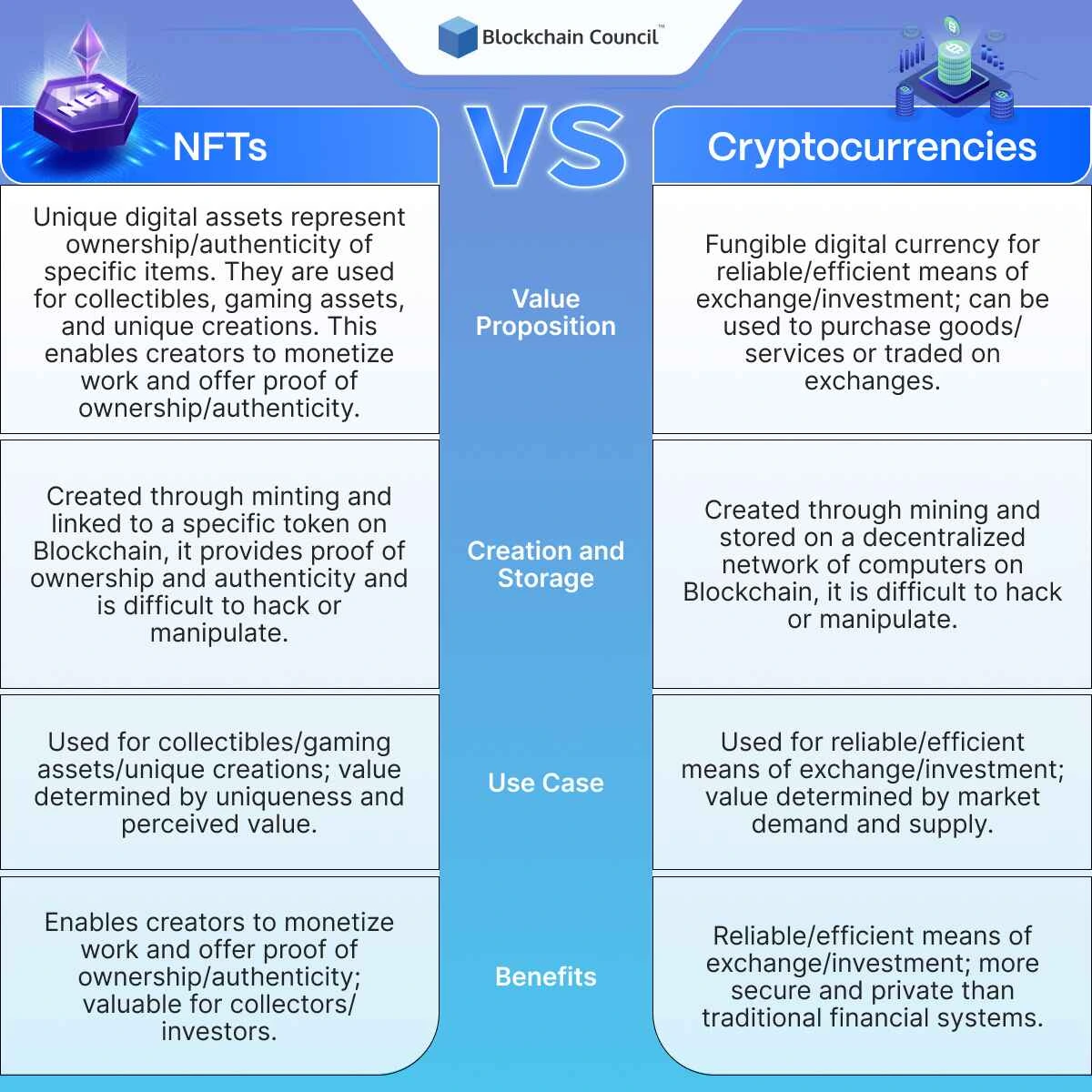
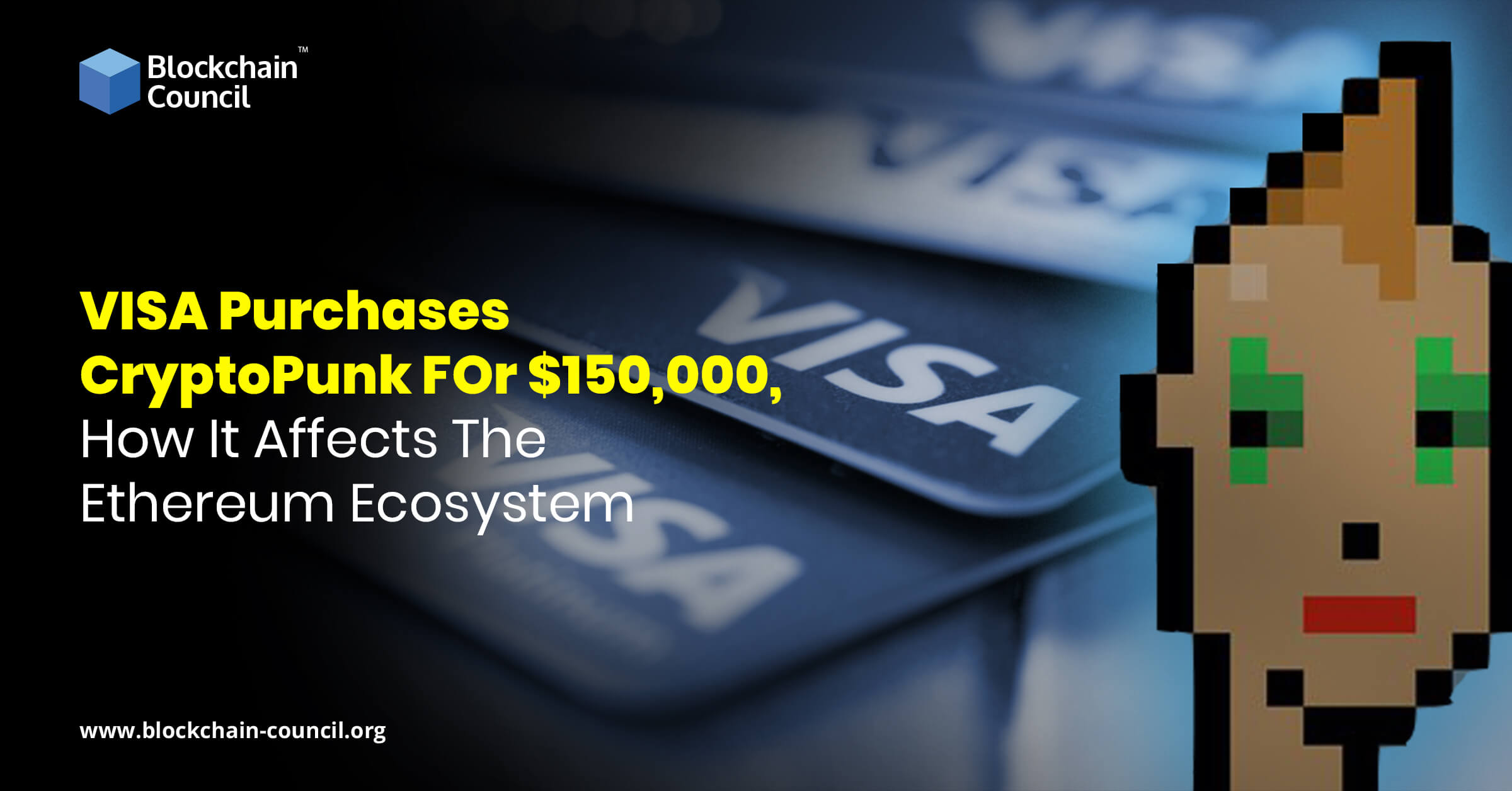
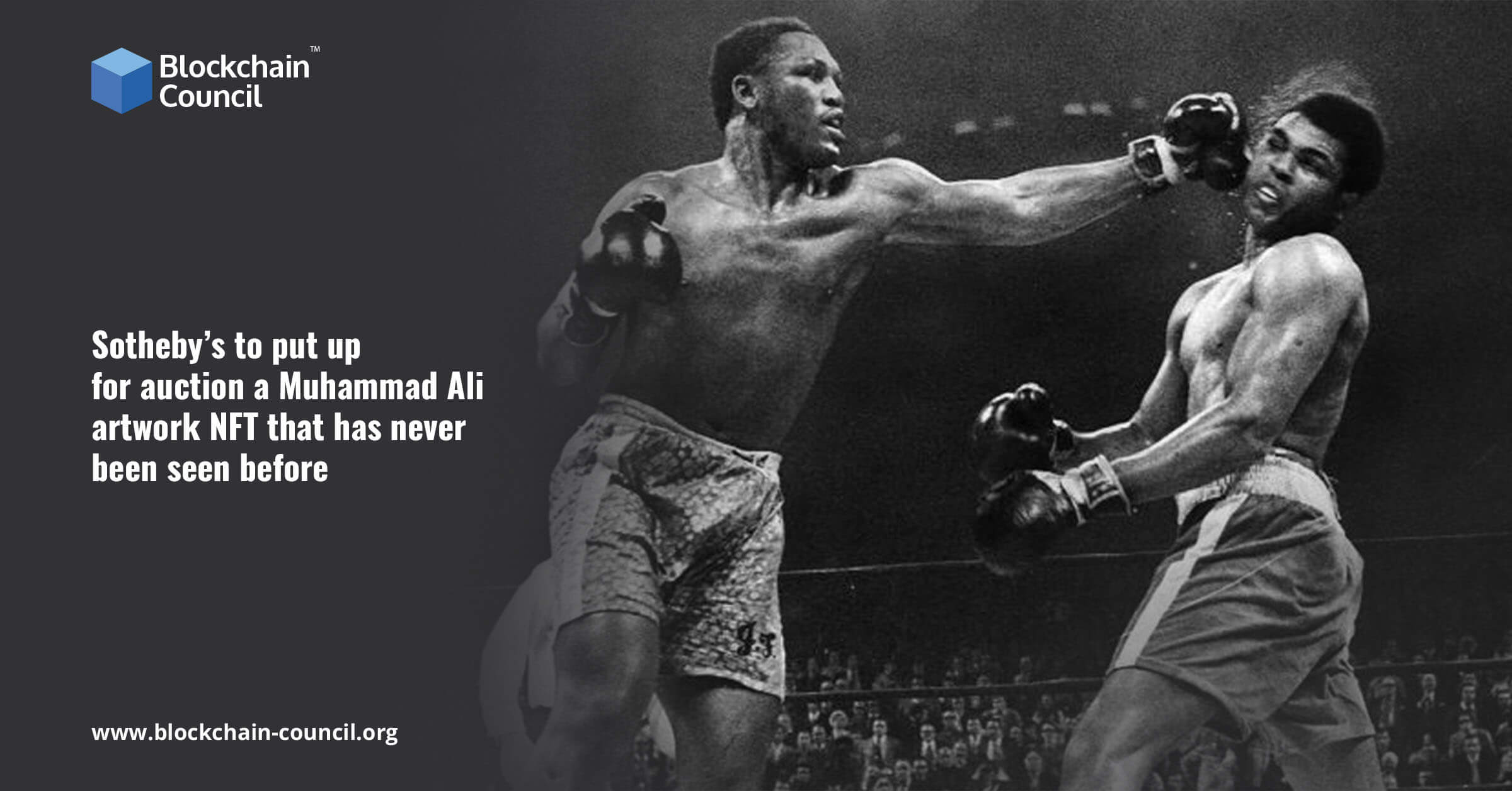
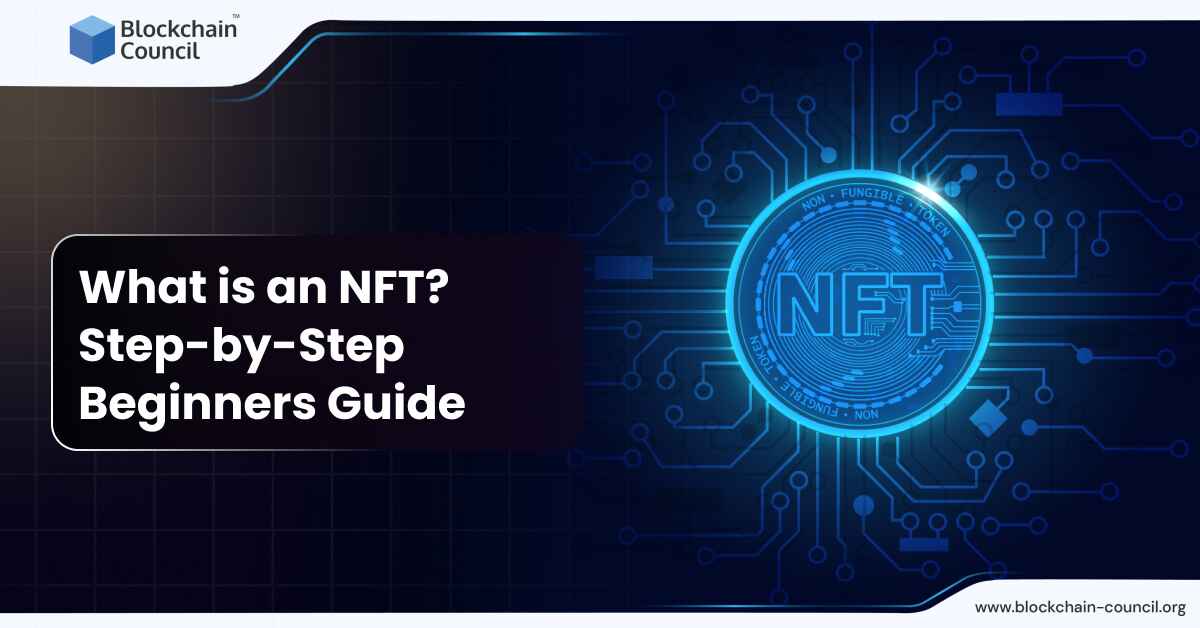
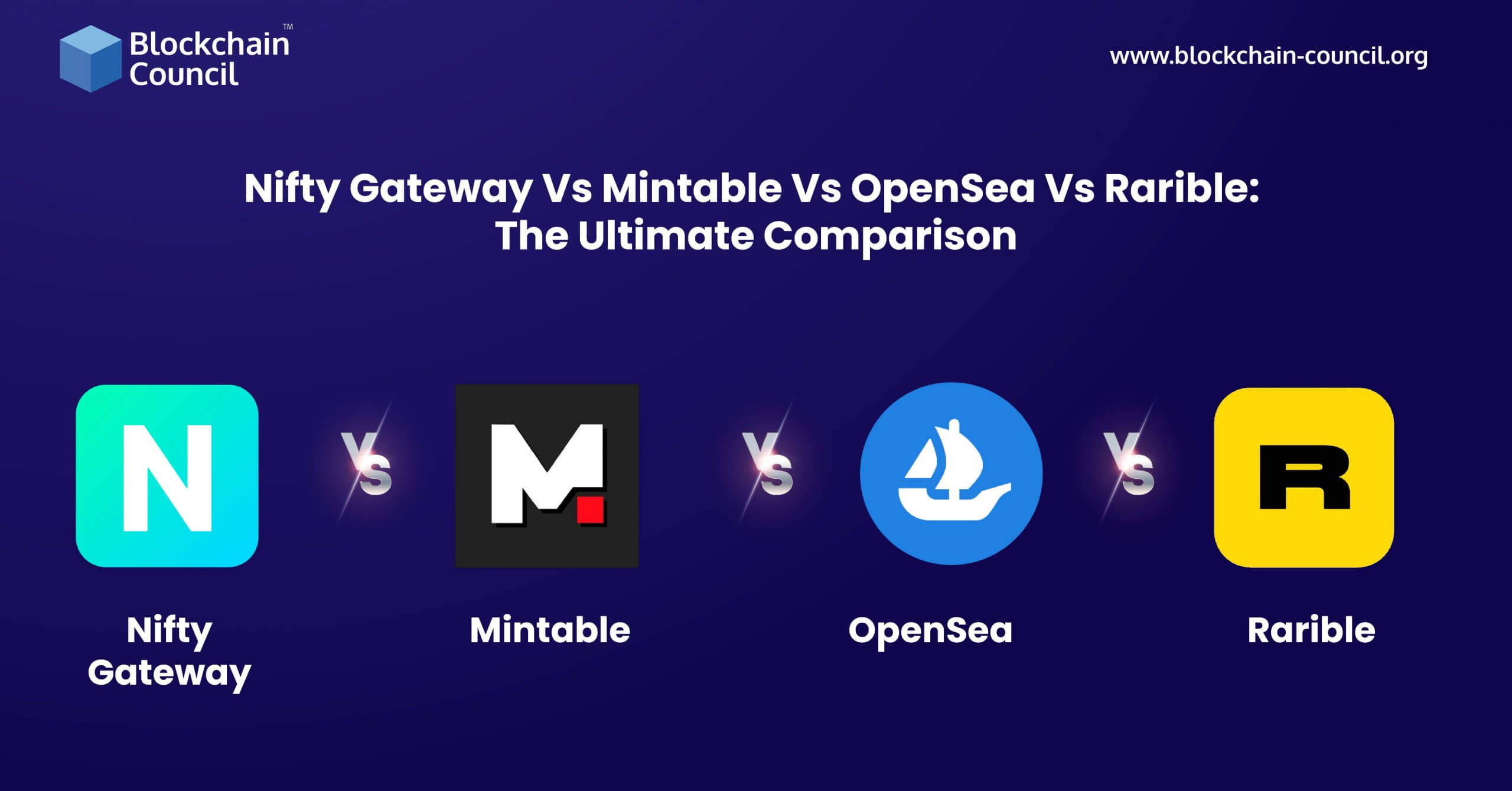
 Guides
Guides News
News Blockchain
Blockchain Cryptocurrency
& Digital Assets
Cryptocurrency
& Digital Assets Web3
Web3 Metaverse & NFTs
Metaverse & NFTs
